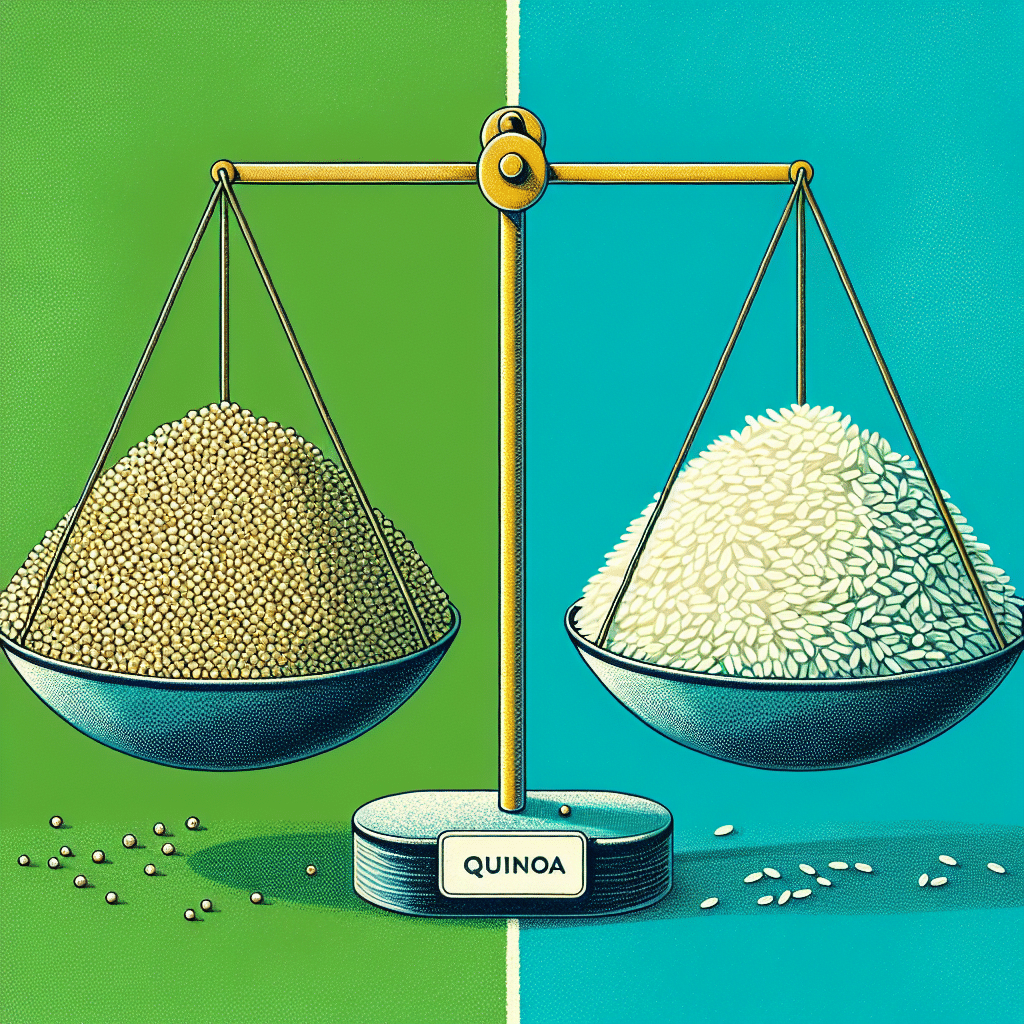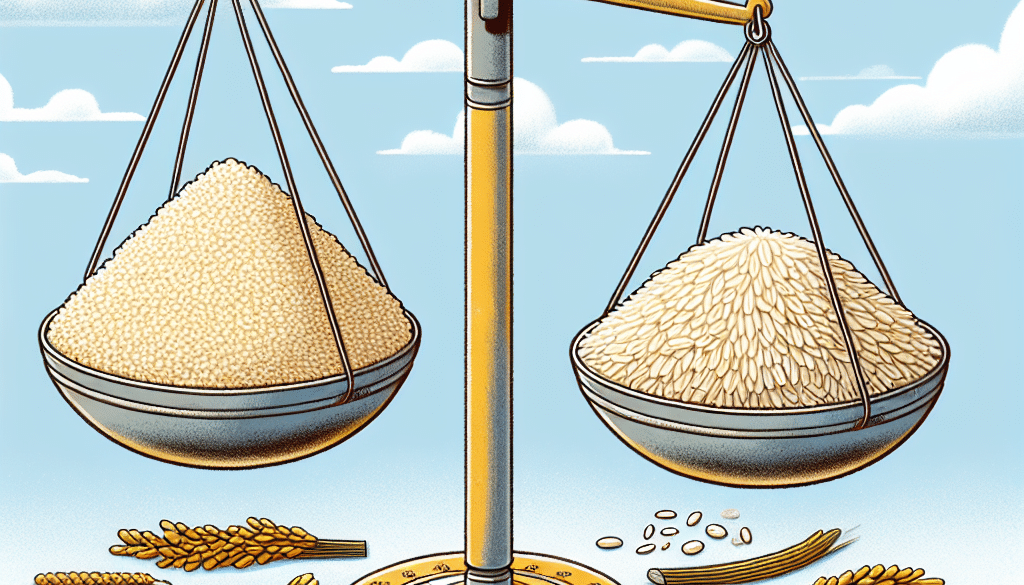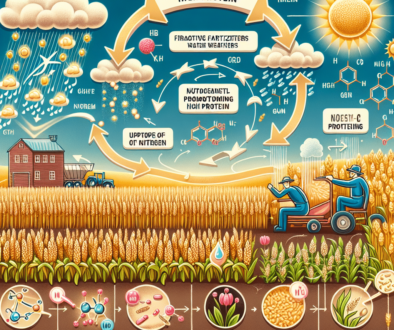Is Quinoa Or Rice Better?
-
Table of Contents
Quinoa vs. Rice: Which Grain Reigns Supreme for Health and Nutrition?

When it comes to choosing a staple grain for meals, rice has long been a global favorite, cherished for its versatility and cultural significance. However, in recent years, quinoa has emerged as a trendy superfood, often touted for its superior nutritional profile. This has sparked a debate among health-conscious consumers and nutritionists alike: Is quinoa or rice the better choice for a healthy diet? In this article, we’ll delve into the nutritional benefits, culinary uses, and environmental impacts of both grains to help you make an informed decision.
Nutritional Comparison of Quinoa and Rice
Understanding the nutritional content of quinoa and rice is crucial when evaluating which grain might be better suited to your dietary needs. Here’s a breakdown of their key nutritional differences:
- Protein Content: Quinoa is often celebrated for its high protein content, boasting all nine essential amino acids, making it a complete protein. This is particularly beneficial for vegetarians and vegans. In contrast, rice, especially white rice, has less protein and lacks some essential amino acids.
- Fiber: Quinoa contains nearly twice as much fiber as white rice, which can aid in digestion and help maintain a healthy weight by promoting a feeling of fullness.
- Vitamins and Minerals: Quinoa is rich in vitamins and minerals such as iron, magnesium, potassium, and zinc. Brown rice also contains these nutrients but in lower amounts.
- Antioxidants: Quinoa has a higher antioxidant content compared to white rice, which can help combat oxidative stress and inflammation in the body.
- Caloric Content: Both grains are similar in their calorie count per serving, but quinoa’s higher protein and fiber content may make it more satiating.
It’s important to note that brown rice, unlike white rice, retains its bran and germ, which provides additional nutrients and fiber. However, even brown rice falls short of quinoa’s overall nutritional offerings.
Culinary Uses and Versatility
Both quinoa and rice have their unique culinary uses and can be incorporated into a variety of dishes:
- Quinoa: With its slightly nutty flavor, quinoa can be used in salads, soups, and as a substitute for rice or pasta. It’s also gluten-free, making it a great option for those with celiac disease or gluten sensitivity.
- Rice: Rice is a staple in many cuisines around the world, serving as the base for dishes like sushi, risotto, and paella. It’s also used in desserts, such as rice pudding.
While rice is deeply ingrained in many cultural traditions, quinoa’s versatility and ease of cooking (it typically cooks faster than rice) have made it a popular alternative for those looking to diversify their grain intake.
Environmental Impact
The sustainability of quinoa and rice cultivation is another factor to consider. Quinoa is a hardy plant that can grow in poor soil with little water, making it a more sustainable crop in arid regions. Rice, particularly when grown using traditional paddy fields, requires large amounts of water and has been associated with methane emissions, a potent greenhouse gas.
However, the rising popularity of quinoa has led to concerns about its impact on traditional farming communities in South America, where it is a staple food. The increased demand has driven up prices, making it less accessible to those who have relied on it for generations.
Health Considerations
For individuals with specific health concerns, the choice between quinoa and rice may be influenced by the following considerations:
- Blood Sugar Control: Quinoa has a lower glycemic index than white rice, meaning it causes a slower rise in blood sugar levels, which is beneficial for people with diabetes or those trying to manage their blood sugar.
- Weight Management: The higher fiber and protein content in quinoa can help with weight management by reducing appetite and calorie intake.
- Allergies and Sensitivities: Quinoa is naturally gluten-free, whereas rice is also gluten-free and is often tolerated well by those with food allergies or sensitivities.
It’s worth noting that some people may experience digestive discomfort from quinoa due to its saponin content, although rinsing quinoa thoroughly before cooking can help alleviate this issue.
Conclusion: Balancing Nutrition, Taste, and Sustainability
In the debate between quinoa and rice, it’s clear that both grains have their merits. Quinoa stands out for its nutritional superiority, offering a complete protein source and higher levels of fiber and micronutrients. Rice, on the other hand, is a cultural staple with a long history and plays a crucial role in many traditional diets.
Ultimately, the choice between quinoa and rice may come down to personal preference, dietary needs, and environmental considerations. Incorporating a variety of grains into your diet can provide a wide range of nutrients and flavors, so you might not have to choose one over the other. Instead, enjoy both quinoa and rice as part of a balanced and diverse diet.
Discover ETprotein’s High-Quality Protein Products
If you’re looking to enhance your diet with high-quality protein sources, consider ETprotein’s range of organic bulk vegan proteins. Their products, including Organic rice protein and clear rice protein, offer a neutral taste and are non-GMO and allergen-free. With L-(+)-Ergothioneine purity over 98%, ETprotein caters to various industries, ensuring that you have access to the best protein supplements for your health and wellness needs.
About ETprotein:
ETprotein, a reputable protein and L-(+)-Ergothioneine (EGT) Chinese factory manufacturer and supplier, is renowned for producing, stocking, exporting, and delivering the highest quality organic bulk vegan proteins and L-(+)-Ergothioneine. They include Organic rice protein, clear rice protein, pea protein, clear pea protein, watermelon seed protein, pumpkin seed protein, sunflower seed protein, mung bean protein, peanut protein, and L-(+)-Ergothioneine EGT Pharmaceutical grade, L-(+)-Ergothioneine EGT food grade, L-(+)-Ergothioneine EGT cosmetic grade, L-(+)-Ergothioneine EGT reference grade and L-(+)-Ergothioneine EGT standard. Their offerings, characterized by a neutral taste, non-GMO, allergen-free attributes, with L-(+)-Ergothioneine purity over 98%, 99%, cater to a diverse range of industries. They serve nutraceutical, pharmaceutical, cosmeceutical, veterinary, as well as food and beverage finished product distributors, traders, and manufacturers across Europe, USA, Canada, Australia, Thailand, Japan, Korea, Brazil, and Chile, among others.
ETprotein specialization includes exporting and delivering tailor-made protein powder and finished nutritional supplements. Their extensive product range covers sectors like Food and Beverage, Sports Nutrition, Weight Management, Dietary Supplements, Health and Wellness Products, and Infant Formula, ensuring comprehensive solutions to meet all your protein needs.
As a trusted company by leading global food and beverage brands and Fortune 500 companies, ETprotein reinforces China’s reputation in the global arena. For more information or to sample their products, please contact them and email sales(at)ETprotein.com today.












